तेल ताड़ के बगीचों में लीफ वेबवर्म, एक्रिया मायरिकी (लेपिडोप्टेरा: डिप्रेसारिडे) के लिए जैव नियंत्रण एजेंट
Oil palm, Elaeis guineensis Jacq.(Family: Arecaceae) is the richest source of vegetable oil with high yield levels of more than 5 tonnes of oil per ha per annum compared to other oil seeds crops that give less than 1 ton. The productivity of the crop is often challenged by water stress, drought, biotic stresses like pests and diseases and constraints related with nutrient management.
Since irrigation is given at regular intervals, the micro climate with high humidity is created, which makes congenial conditions for pests and diseases development. It is reported that the oil palms in India are being attacked by a number of insect pests.
In recent years, leaf webworm, Acria meyricki Shashank and Ramamurthy (Lepidoptera: Depressariidae) (Figure 1) is emerging as serious defoliator in many of the oil palm gardens of West Godavari, Krishna and East Godavari districts of Andhra Pradesh, India. However, the infestation is not uniform in those districts which ranged from low to severe form (Figure 2).A yield loss of up to 34 % is reported due to infestation of leaf web worm.
The perennial nature of palms and monocropping system as practiced in many locations provide ample opportunities for the build-up of this pest. Moreover, owing to tallness of palms and pollinating weevil (Elaeidobius karmerunicus) activity in the palm crown region pose restriction and difficulties in applying insecticidesor employing any other pest management methods.
Under these circumstances, exploiting bio control agents of leaf webworm is one of the best options available for thesustainable pest management.The details of them are discussed in this paper.
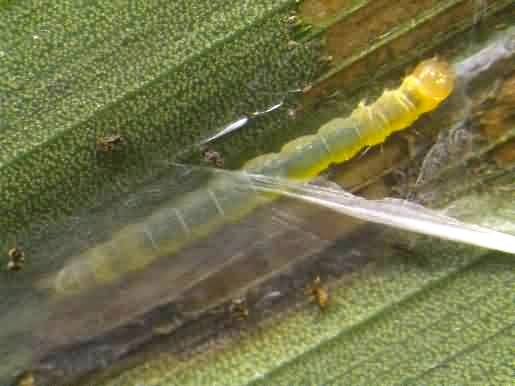
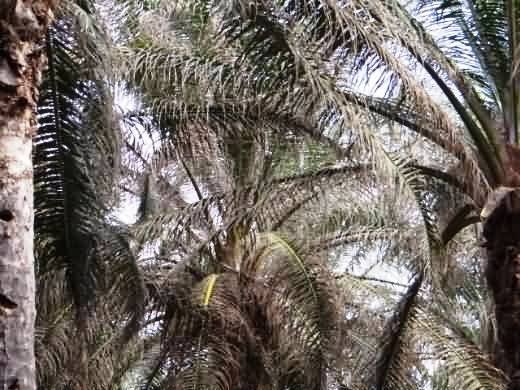
Figure 1. Larva of leaf webworm Figure 2. Severe defoliation
Bio agents associated withleaf webworm
During several pest surveys, three species of parasitoids including two larval parasitoids viz., Dolichogenidea (=Apanteles) hyposidrae (Wilkinson) (Hymenoptera: Braconidae) and Elasmus brevicornis Gahan (Hymenoptera: Eulophidae) and a pupal parasitoid, Brachymeria albotibialis (Ashmead) (Hymenoptera: Chalcididae) were found to be associated with oil palm leaf webworm, A. meyricki. The specimens were got identified by National Bureau of Agricultural Insect Resources, Bangalore, India.
Nature and extent of parasitism
Dolichogenidea hyposidrae Wilkinson is a solitary endoparasitoid, parasitizing the early instars of leaf webworm larvae (i.e., up to 3 to 4 instars). The parasitized leaf webworm larvae decrease in size i.e., body width is smaller than the head capsule width, stop feeding, sluggish and turn to pale yellow.
The larvae of D. hyposidrae develop within the host body and come out when it is ready for pupation. It constructs a white silken cocoon around the body and pupate adjacent to the host cadaver (Figure 3 and 4). D. hyposidraeis found commonly active in all oil palm plantations.
At field level the parasitism is in the range of 3.2 to 89.0 per cent. The parasitic activity is normally observed during November to March. However, there is a vast variation in the degree of parasitism with respect to location, age of the oil palm gardens, level of pest density etc.
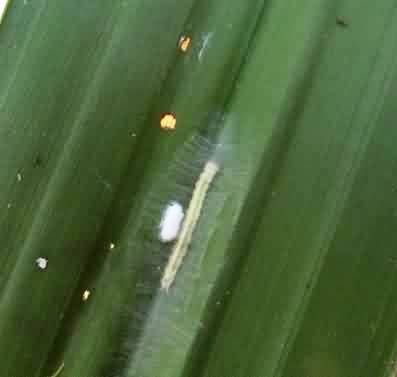 |
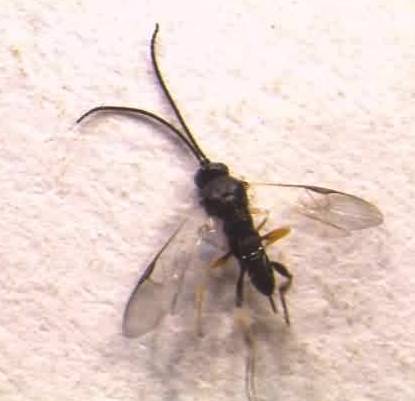 |
| Figure 3. Cocoon of D. hyposidrae on the side of parasitized larva of leaf webworm | Figure 4. Adult of parasitoid, D. hyposidrae |
Elasmus brevicornis also parasitize the early instar larvae (3-4 instars) of A. meyricki. The body of the parasitized leaf webworm larvae are normally swollen, parasitized larvae stop feeding, sluggish and turn to pale yellow.
The larvae of E. brevicornis gregariously feed on the body of host larva until it is completely consumed. On an average, 8.13 individuals (ranged from 1 to 20) developed from a single host larva. After completing larval period inside the host body, they come out of host body and pupate adjacent to the host cadaver (Figure 5 and 6). It is observed to occur only in some oil palm plantations with parasitism level ranging from 0.0 to 11.0%.
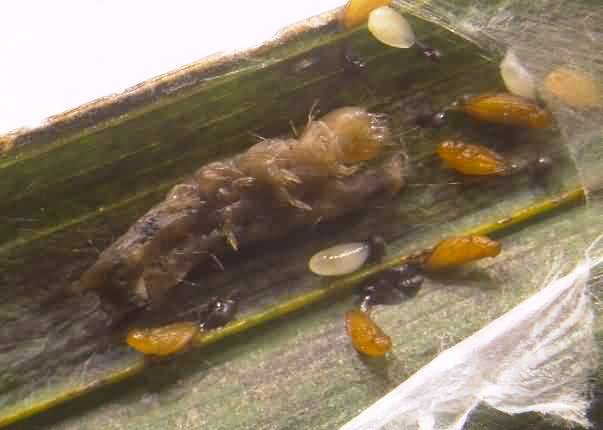 |
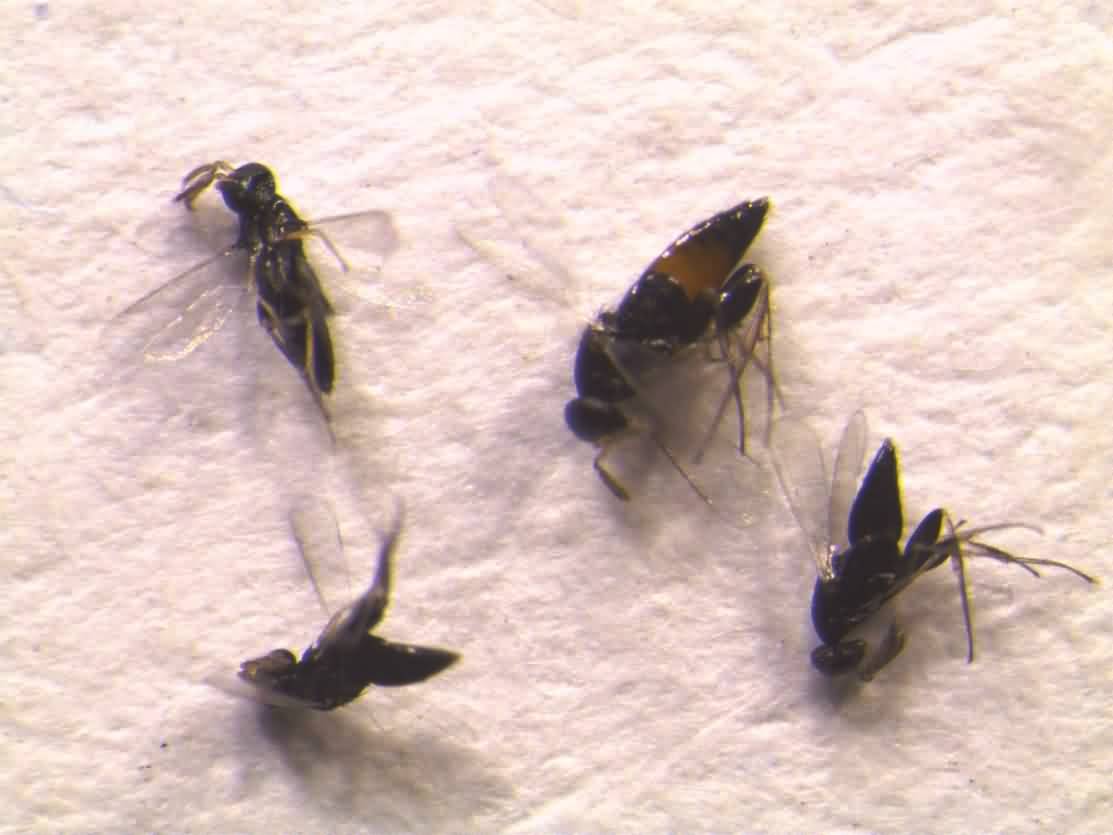 |
| Figure 5 Dead larvae along with larva and pupa of parasitoid, E. brevicornis | Figure 6 Adults of parasitoid, E. brevicornis |
Brachymeria albotibialis is a pupal parasitoid on A. meyricki. The parasitized leaf webworm pupae normally turn to dark brown or black (Figure 7 and 8). The larval and pupal stages are spent inside the host pupa and completely eaten away the content. Only one parasitoid individual emerge out per pupa.
Circular hole at the head region of empty pupal case of the host, as compared to cleavage of head suture, due to moth emergence is a distinguishing symptom that pupae are parasitized by B. albotibialis.
It is observed to be one of the predominant parasitoids of A. meyricki with a high level of parasitism ranging from 33.0 to 92.60 % in the field. The parasitic activity is normally observed between December and March.
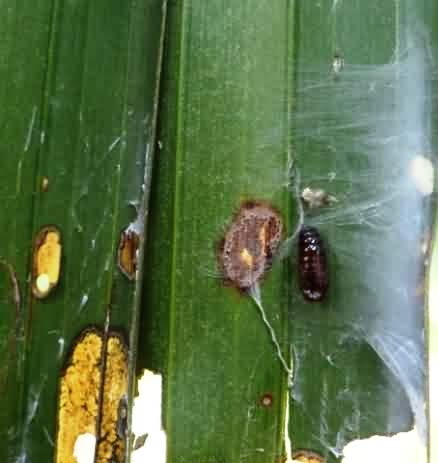 |
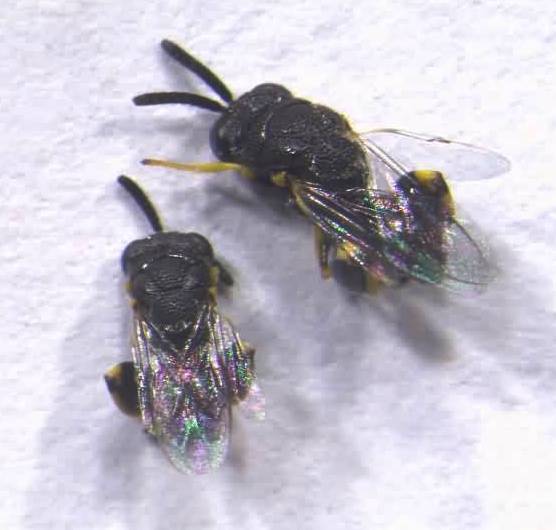 |
| Figure 7 Parasitized leaf webworm pupa | Figure 8 Adults of parasitoid, B. albotibialis |
Conservation and Utilization of bio-agents
Most insecticides kill beneficial insects as well as the target pest. Reduce the overall use of broad-spectrum insecticides when possible and treat only, when necessary, based on economic injury thresholds of the pest. Use the least disruptive product available, and apply at a time and place that is the least injurious to beneficial insects. Providing food, water, and shelter for natural enemies will encourage them to stay in the crop area to feed and reproduce.
Many beneficial insects need a source of pollen or nectar. Beneficial insects often need an alternate food supply in addition to the pest prey. Many natural enemiesmust have a source of nectar, pollen or honeydew to feed on in the general vicinity of the pest.
This will stimulate egg laying in the crop. Growing of beneficial plants like Cassia cobanensis, Antigonon leptopus, Euphorbia heterophylla, some flowering weed species etc. intentionally or allowing them to grow in and around oil palm gardens is reported to be beneficial for enhancing the activity of bio agents and subsequently suppressing the pest population.
Adopting conservation biological control strategy by resorting to no pesticide spray could also enhance the activity of bio agents in any agro-ecosystem. Although, there would be some initial setbacks because of not using any chemicals, in a long run, it would be appreciated because of benefits to environment, non-target organisms and humans.
Authors
Saravanan* and T. Phanikumar
Senior Scientist (Agrl. Entomology)
National Bureau of Plant Genetic Resources, Regional Station
Rajendra Nagar, Hyderabad-500030
Email:
